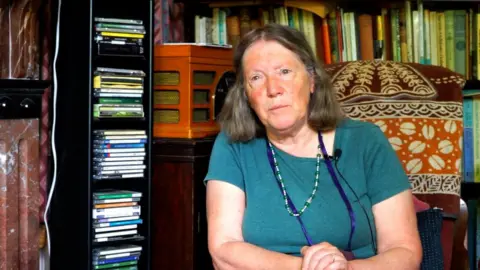The new generation learning about ancient townlands
Schoolchildren have been taking part in a project aimed at raising awareness about ancient pieces of land in Northern Ireland.
Townlands are small areas based on old Irish land divisions, many of which existed before the arrival of the English language in Ireland.
The My Townland and Me project has seen young people create podcasts and maps about their local areas.
The project received money from the National Lottery Heritage Fund.
It's the latest attempt to raise awareness of townlands among children in some rural parts of Northern Ireland.
'I thought I knew my area'
Several primary schools in the south Lough Neagh area took part with nearly 200 pupils learning about their area through traditional crafts and storytelling sessions.
St Mary's Primary School in Derrymore is located on the south shore of Lough Neagh.
The work produced by its pupils as part of the project remains on display in the school corridors.
They explored the heritage of their townlands from Derrymore, An Doire Mór, which translates to the big oakwood, to Aghacommon, Achadh Camán, which translates to the field of the hurl or hurling stick.

Eleven-year-old Harry lives only a few miles from St Mary's school.
"It's a small area - you think you know it like the back of your hand but I enjoyed finding out more about the background of the place", he said.
Eva is in primary seven and her family live in Derrymore.
She said: "It's a brilliant place to live because it's quiet and the lough is right there so you can go swimming and do water sports but before the project I didn't know much more about here than that."
Conor, 11, said he enjoyed learning about the area through activities.
"We did storytelling, we wrote poems, we did art and even went on a school trip," he said.
Primary seven pupil Eimear spoke to her grandparents as part of the project.
She added: "I just wanted to get their perspective of this place and the history of it.
"So for example they were able to tell me about the seven Derrys in the area, places like Derrymore and Derrytrasna."
 National Lottery Heritage Fund
National Lottery Heritage FundMs McKavanagh is a primary seven teacher at St Mary's and worked with her pupils on the townland project.
She said: "The kids loved learning about where they come from and finding out new things.
"They put their own spin on it and really took charge of creating their own podcasts about it."
As part of the project pupils also learnt from older members of the community and historians through storytelling sessions.
'You can learn a lot about yourself'
After the Plantation of Ulster in the 17th Century, many townlands were written down in English spelling, creating an anglicised form.
In recent years, because of the introduction of postcodes and technology, there have been campaigns to save the original names of townlands.
Some councils have introduced townland road signs.
Meanwhile The Northern Ireland Place-Name Project has been gathering and analysing historical forms of place names since 1987 to try to establish what they originally meant.
Dr Kay Muhr is a place names researcher and current chair of the Ulster Place Names Society.
She delivered a talk as part of the My Townland and Me project.

She said: "People don't always realise that you can trace some Irish townland names back to the end of the last millennium.
"Quite often townland names come from identifying features of the land such as rocks, hills, trees or water."
She added: "I think it's important for schoolchildren to hear about townlands because you can learn a lot of things about life by looking at the place you live in."
